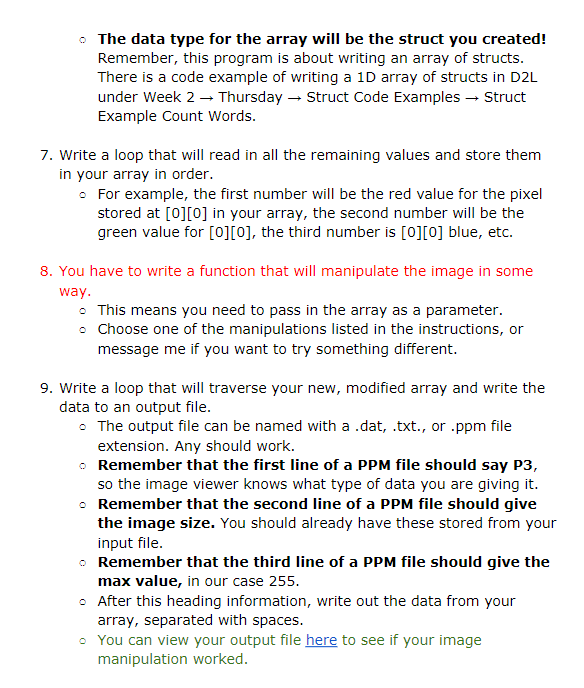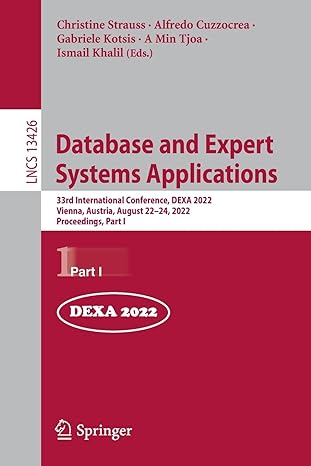Answered step by step
Verified Expert Solution
Question
1 Approved Answer
Need a program in C++ that will read in RGB values from a dat file manipulate the values and outfile the values to another dat
Need a program in C++ that will read in RGB values from a dat file manipulate the values and outfile the values to another dat file by use of an array of structs and a loop that will store the values. Then a function to manipulate the values, then finally another loop that will outfile the information to another file. Please answer in c++ and please do not make it too complicated I would like to use it as a reference.



Step by Step Solution
There are 3 Steps involved in it
Step: 1

Get Instant Access to Expert-Tailored Solutions
See step-by-step solutions with expert insights and AI powered tools for academic success
Step: 2

Step: 3

Ace Your Homework with AI
Get the answers you need in no time with our AI-driven, step-by-step assistance
Get Started


